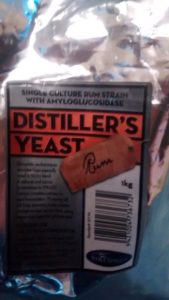Last year in London I attended a brief tasting event put on by David T. Smith on the subject of Gin. Coming away from this event, I was curiously intrigued by his remarks concerning Orris Root, which he dubbed “the fixer”. Over the past many months, I have started offering 1-day Gin Master Classes at the tail end of the 5-Day Master Distiller Workshops. I have now started experimenting with Orris Root and yes…there is something magical about this material which is the root bulb from the Iris flower, which I am sure many of you have seen (and maybe grow).
I cannot explain the science behind Orris, but it somehow marries the various botanicals together and essentially “fixes up” the Gin. I rely heavily on my dear wife’s taste palate when it comes to Gin recipes. To further test Orris, I recently did a small Gin run using our standard household Gin recipe. Except, this time I added some Orris. When I served her a sample of the Gin, she took her customary sip and immediately remarked – “there is something different about this Gin. I like it..”.
Orris is now a key ingredient in all Gins that I make – whether at home or at a Gin MasterClass.
Thank You David T. Smith.
To wrap up this blog post, I leave you with a recipe recently trialed (to great acclaim) by the participants at a recent MasterClass.
They took 500 mls of high proof alcohol from the distillery (just like the alcohol that you could easily make on your home distillation device)
They added, 27 g of Juniper, 7 g Coriander, 7 g grapefruit peel, 10 g dried lemon peel, 10 g dried Orange Peel, 2 g Lime Peel, 3 g Lavender, 4 g Ginger Root, 5 g Orris and 0.5 g hops.
They added this alcohol/botanical mixture to a small Al’Ambic pot still. They also added also 200 mls water.
They distilled low and slow over a propane burner.
They proofed the distillate to 43% (86 proof).
We all Enjoyed it !




